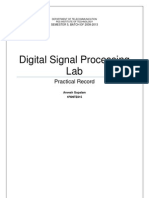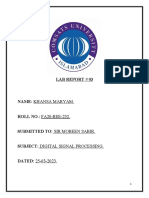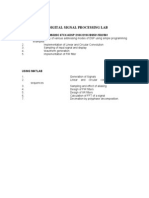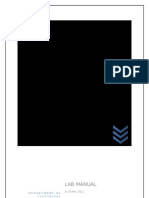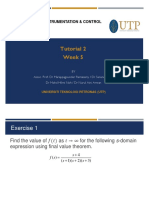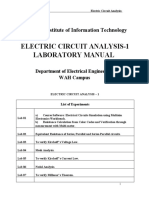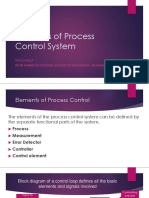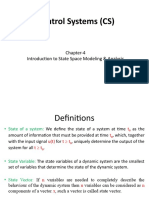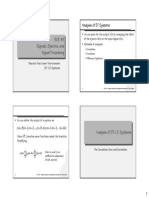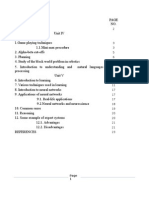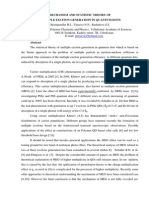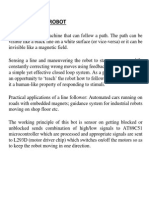0% found this document useful (0 votes)
110 views35 pagesDSP Lab Manual 19 Nov 20111
The document contains details of the Digital Signal Processing (DSP) lab experiments using MATLAB and a DSP processor. It includes 8 MATLAB experiments on topics like verification of sampling theorem, impulse response, linear and circular convolution, autocorrelation, solving difference equations, DFT, and IIR filter design. It also provides instructions on designing and implementing an IIR Butterworth filter to meet given specifications. The last section provides the procedure to execute experiments on a TMS3206713 DSP processor using its simulator in CCS Studio.
Uploaded by
TapasRoutCopyright
© © All Rights Reserved
We take content rights seriously. If you suspect this is your content, claim it here.
Available Formats
Download as PDF, TXT or read online on Scribd
0% found this document useful (0 votes)
110 views35 pagesDSP Lab Manual 19 Nov 20111
The document contains details of the Digital Signal Processing (DSP) lab experiments using MATLAB and a DSP processor. It includes 8 MATLAB experiments on topics like verification of sampling theorem, impulse response, linear and circular convolution, autocorrelation, solving difference equations, DFT, and IIR filter design. It also provides instructions on designing and implementing an IIR Butterworth filter to meet given specifications. The last section provides the procedure to execute experiments on a TMS3206713 DSP processor using its simulator in CCS Studio.
Uploaded by
TapasRoutCopyright
© © All Rights Reserved
We take content rights seriously. If you suspect this is your content, claim it here.
Available Formats
Download as PDF, TXT or read online on Scribd
/ 35
